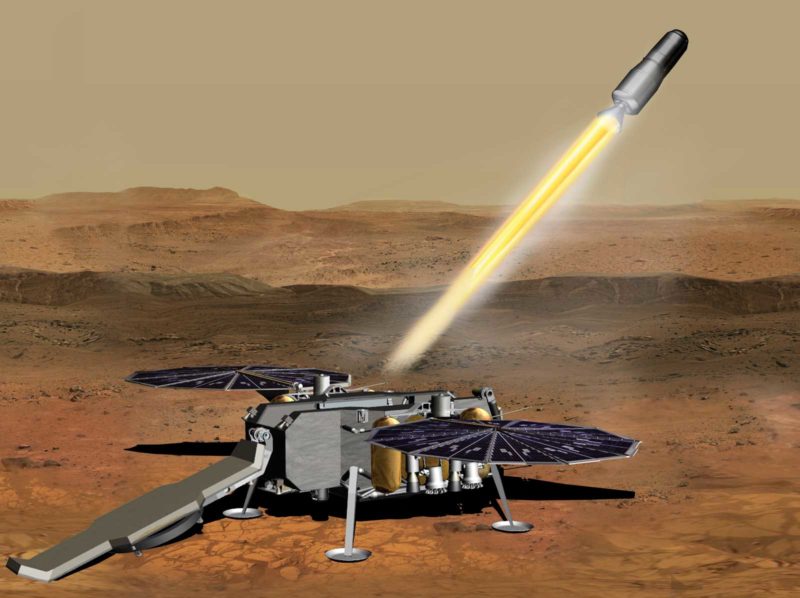
Northrop Grumman Corp. will provide solid propulsion systems and controls for NASA’s Mars Ascent Vehicle (MAV), scheduled to launch to the Red Planet as soon as 2026 as part of an ambitious campaign to recover surface materials gathered by the recently-arrived Perseverance rover.

After a 6.5-month voyage, Perseverance completed her nail-biting “Seven Minutes of Terror” with a picture-perfect Entry, Descent and Landing (EDL) on 18 February, touching down in Mars’ geologically significant Jezero Crater region, which is thought to be the location of an ancient lake. The 14-month Mars Ascent Propulsion System (MAPS) contract, which began on 4 March, carries a potential mission services value of $60.2 million and a maximum potential value of $84.5 million, followed by two optional periods to be exercised at NASA’s discretion.
Situated on the western edge of the Isidis Planitia impact basin, just to the north of the Red Planet’s equator, the 28-mile-wide (45 km) Jezero Crater has already whetted scientific appetites as it offers promising sampling locations for different rock types, including clays and carbonates which carry a high potential to preserve the biosignatures of past life.
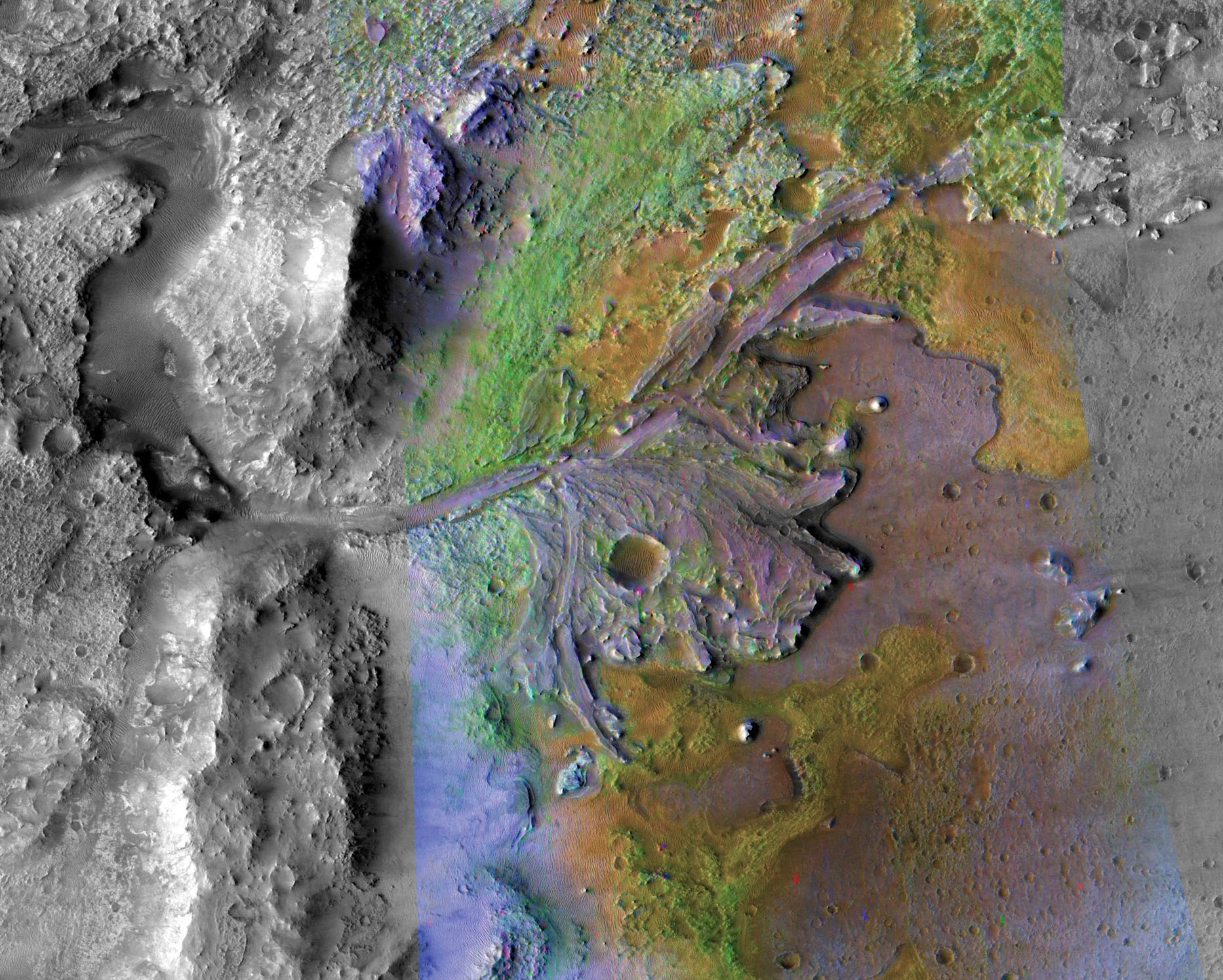
Right from the start of Perseverance’s story, in fact, a cornerstone mission objective was to collect up to 31 rock and soil specimens and “cache” them for a possible future return to Earth. As well as helping to develop new technologies to someday send humans to Mars, it will allow actual regolith from the Red Planet to be brought directly into the hands of researchers for detailed inspection and analysis.
Perseverance’s Scanning Habitable Environments with Raman and Luminescence for Organics and Chemicals (SHERLOC) instrument is an ultraviolet Raman spectrometer which combines fine-scale imaging with an ultraviolet laser to examine minerals and organics on the Martian surface.
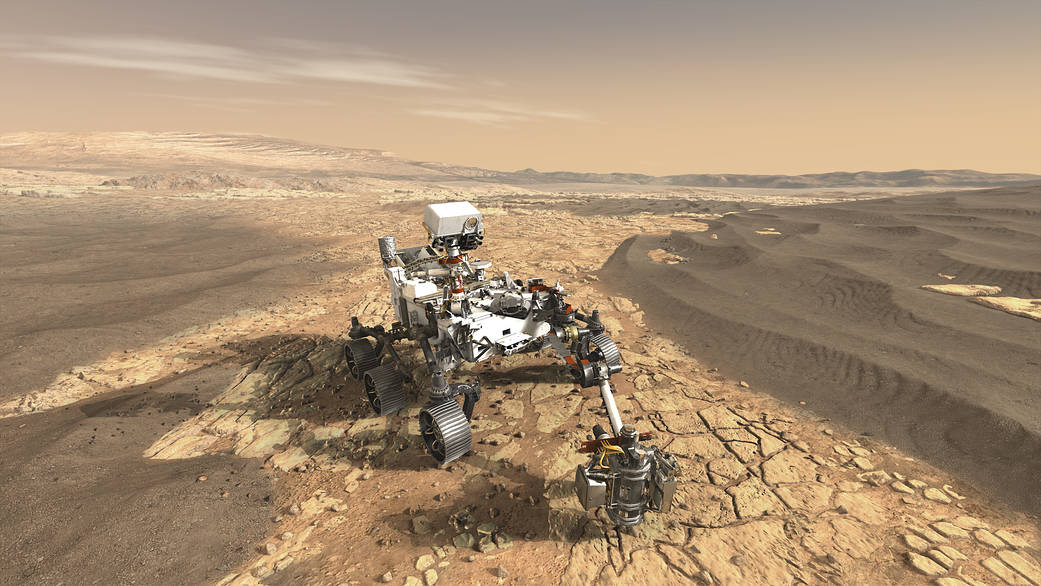
It will assess the “habitability potential” of samples and their aqueous histories, look for the availability of key elements and energy sources necessary for life to thrive, determine possible biosignatures in rocks and provide the requisite mineralogical and organic analysis for selecting and caching them.
And choosing, gathering and caching those specimens is the task for a rover which only last week commenced its long-awaited First Drive on Mars. Having identified what NASA describes as “compelling rocks”—especially those which formed in (or were altered by) the presence of water, as well as volcanic specimens to help establish a record of geological and environmental change over time—the rover will drill core samples.
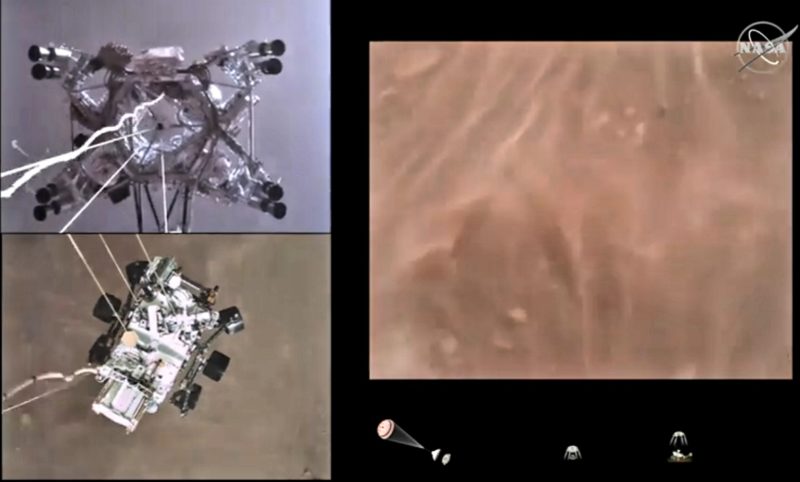
Using pre-cleaned tubes, Perseverance’s rotary percussive coring drill will penetrate a couple inches (5 cm) into the target material, after which it will break off the 0.5-ounce (15-gram) core sample from the rock and hermetically seal it.
Each sealed tube will then be inserted into a storage rack aboard the rover until the Perseverance team chooses to deposit it onto the surface. According to NASA, the team will employ a strategic approach known as “depot caching” to determine when and where to leave the tubes. In the baseline plan, it will place one or more large groups of samples in carefully chosen locations.
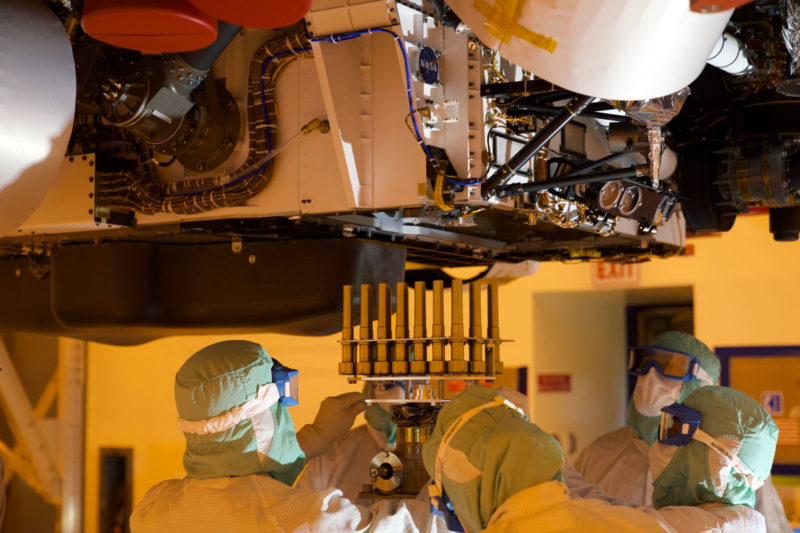
“The Perseverance rover puts the Martian samples, the witness blanks and procedural blanks in the same place on the Martian surface,” the agency explained, “so that a future mission could potentially retrieve and return them all together.”
Using data gathered from current Mars-circling NASA spacecraft—including the Mars Reconnaissance Orbiter (MRO)—these locations can be identified with a precision of about 3 feet (1 meter), with Perseverance’s own high-resolution images narrowing that down still further to 0.5 inches, or less than a single centimeter.
The MAPS award to Northrop Grumman brings NASA and the European Space Agency (ESA) another step closer to realizing—for the first time in history—a fully-fledged Mars Sample Return (MSR) mission.
Following the award of the 14-month base period, with two optional extension periods, the next steps are for NASA and ESA to provide their own respective mission elements. The United States is developing a Sample Retrieval Lander (SRL) and the MAV, whilst Europe furnishes the Earth Return Orbiter (ERO), Airbus’ four-wheeled Sample Fetch Rover and the lander’s Sample Transfer Arm.
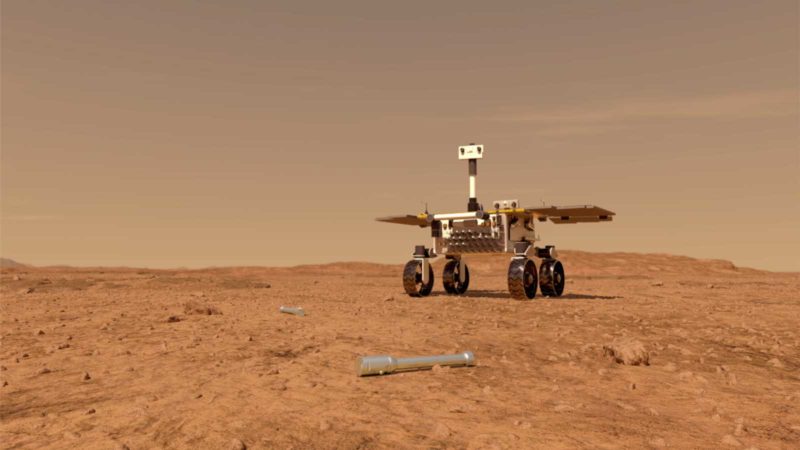
Slated to launch in 2026 and arrive at Mars in 2028, the SRL will transfer the rover and two-stage MAV down to the rugged Martian surface. For the next six months, traveling about 650 feet (200 meters) per day and covering as much as 9 miles (15 km) across the surface, the rover will gather up to 36 of Perseverance’s cached sample tubes.
Should it succeed, it will retrieve at least 1.1 pounds (500 grams) of Martian regolith, transfer it to the SRL and, via the Sample Transfer Arm, into the basketball-sized Orbiting Sample (OS) container atop the MAV. Then, under the power of Northrop Grumman’s propulsion assets, the MAV will transport its precious cargo into orbit, marking the first launch from another planet.
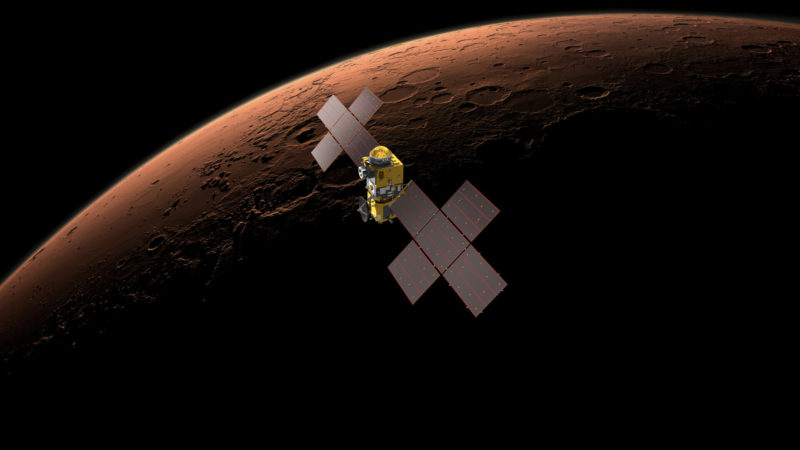
After reaching orbit, the ERO spacecraft is tasked to execute a precise rendezvous and capture of the OS. Last October, ESA awarded contracts worth $583.6 million to Airbus to build ERO, which will be launched from Kourou, French Guiana, atop an Ariane 6 booster in late 2026. Powered by solar electric propulsion—featuring 1,550 square feet (144 square meters) of solar cells—the 13,500-pound (6,100 kg) ERO will spend a year in transit to Mars, whereupon it enter a circular rendezvous orbit about 250 miles (400 km) above the ochre-hued surface.
After capturing the OS, the spacecraft will employ NASA’s Capture, Containment and Return System to isolate and transfer the sample canister to an Earth Entry Vehicle (EEV) for the 13-month journey home to Earth. As it approaches the Home Planet in 2031, ERO will jettison the EEV “on a precision trajectory towards a pre-defined landing site”, whilst the spacecraft itself will go on to enter “a stable orbit around the Sun”.
Last fall, after three months of detailed analysis, the MSR Independent Review Board, chaired by former Orbital ATK President David Thompson, provided “strong support” for the challenging mission. And in December 2020, NASA approved MSR to progress to Phase A, which will see the maturation of critical technologies and critical design decisions as well as the assessment of industrial partnerships.
Key issues affecting Northrop Grumman as it prepares to build the MAV hardware task is the harsh Martian environment, which is a core driver in the design, development, manufacturing, testing and flight-qualification of two different solid-fueled motors with multiple deliveries of each. Northrop Grumman will furnish its STAR first and second stage high-performance motors, together with a first-stage Thrust Vector Control (TVC) system and second-stage spin rockets for the MAV.
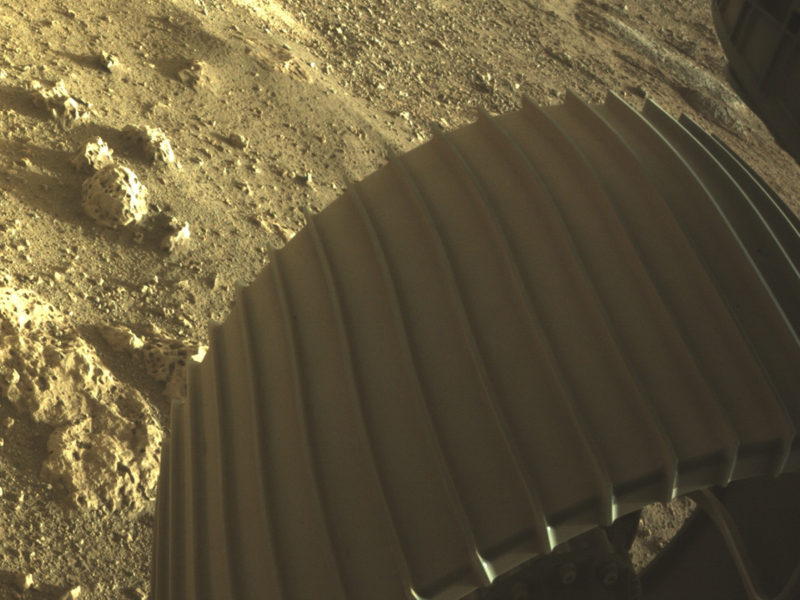
After this task has concluded, the MAV will launch into orbit around Mars to rendezvous with the ERO. The satisfactory performance of Northrop Grumman’s propulsion and control systems will be pivotal in the success of getting the vehicle off the surface and into a precise rendezvous orbit.
“We are committed to help build the rockets that will orbit the samples Perseverance collects so they can be returned to Earth,” said Rebecca Torzone, vice president of missile products at Northrop Grumman. “We play a vital role with NASA, as we have for decades, by providing key propulsion and control subsystems in support of human spaceflight and robotic exploration missions.”





